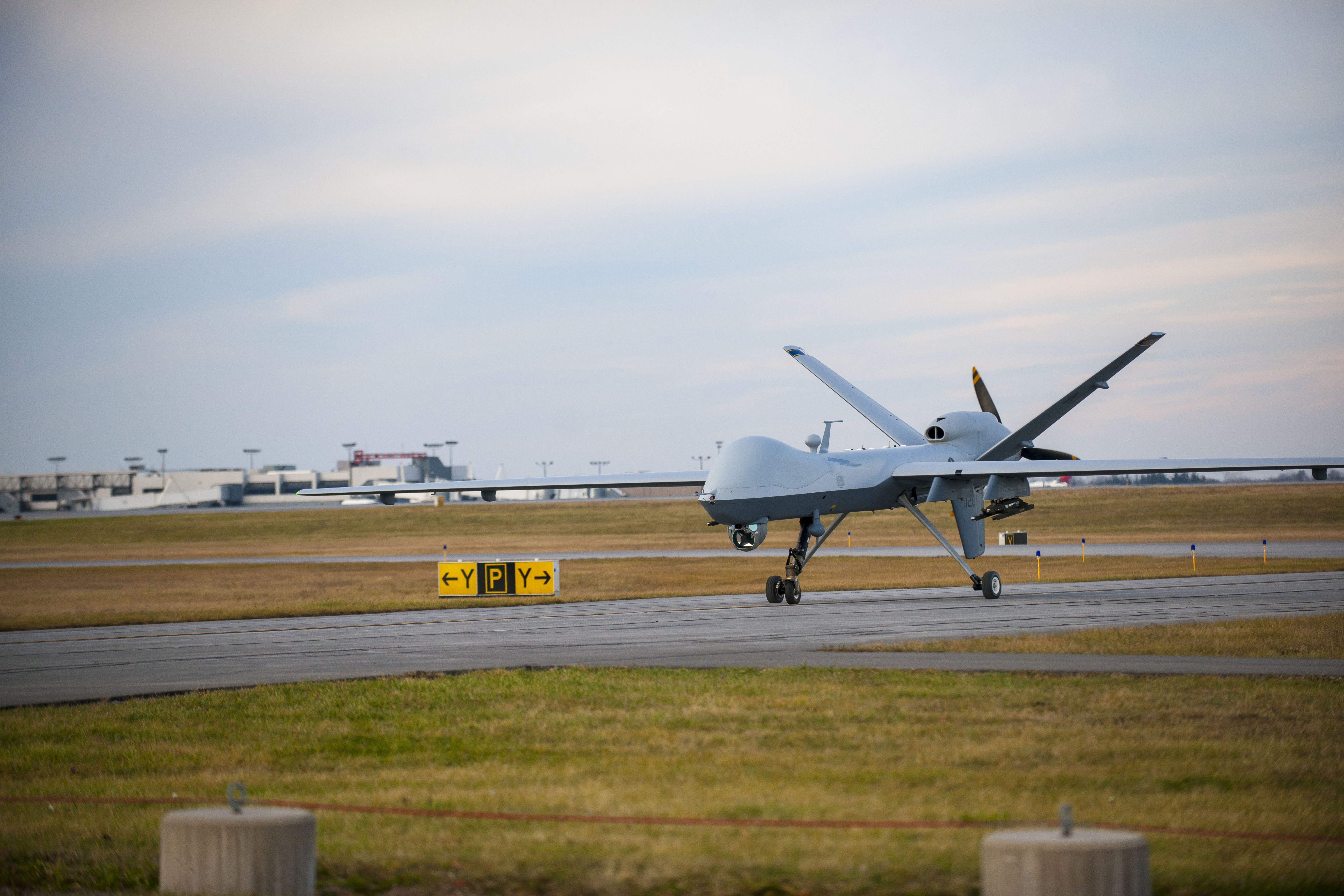
The New York Air National Guard’s 174th Attack Wing began conducting daily MQ-9 training flight operations from Hancock Field Air National Guard Base and Syracuse Hancock International Airport, beginning Wednesday, June 15.
The initial first launch and recovery of the MQ-9 remotely piloted aircraft took place from Hancock Field Air National Guard Base and Syracuse Hancock International Airport in December 2015.
At that time, Col. Greg Semmel, then the 174th Attack Wing commander, had stated that the wing would take a “crawl, walk, run” progression towards achieving daily flying operations from Hancock Field and the Syracuse International Airport.
After successfully achieving the initial first flight or “crawl” phase in December, daily flying had been delayed, as the wing worked with Syracuse Air Traffic Control on a local operating agreement .
When daily flight operations begin an aircraft flown by the Civil Air Patrol (CAP) will be utilized to relay information to the MQ-9 pilots in connection to the location of other aircraft in the surrounding airspace.
Prior to the launching of the MQ-9, the CAP piloted aircraft will take flight. Once the MQ-9 is airborne, the CAP aircraft will trail the MQ-9, staying within a few hundred feet of each other. The CAP will remain with the MQ-9 until it has reached the military’s restricted airspace.
When the MQ-9 has completed its training mission, the CAP aircraft will meet up with the MQ-9 in the restricted airspace and follow it back to the Syracuse International Airport’s runway.
This process is expected to remain in place until sometime next year, when new radar technology will be available to relay the same information that the CAP pilots will be providing to the MQ-9 pilots.
Once flying begins, the 174th Attack Wing will be conducting the same types of training mission members have conducted for over 60 years in order to continually train service members to be prepared to support the wing’s federal and state missions.
Flight operations will take place over approved airspace and will follow established operating procedures and instructions.
BACKGROUND
MQ-9 Operations at Hancock Field:
Prior to December, all flight operations of the MQ-9 aircraft were conducted at Wheeler Sack Army Airfield at Fort Drum.
The FAA approval follows a technical and operational review for the safe and effective takeoff and recovery of MQ-9 aircraft at Hancock Field, home to operator and maintenance training of MQ-9 crews.The FAA modified airspace around Hancock Field in 2013 to expand available training areas and provide transition from high altitude down to Hancock Field.
The 174th Attack Wing will be the first Air Force organization in the United States to fly the remotely piloted aircraft in class “C” airspace, the common airspace around commercial airports.
Class “C” Airspace is generally that airspace from the surface to 4,000 feet above the airport elevation surrounding airports that have an operational control tower, are serviced by a radar approach control, and have instrument flight operations or passenger terminals.
“Having the ability to fly from Hancock Field on a daily basis is two-fold,” said Col. Michael Smith, 174th wing commander. “It will not only allow us to increase our student production by up to 50 percent, it will also help save over $1 million in taxpayer costs.”
The wing currently flies from Wheeler-Sack Army Airfield and plans to continue to utilizing the airfield during adverse weather conditions and when flying with live ordnance .
174th Attack Wing:
The 174th Attack Wing was established in 1947 as the first Air National Guard flying unit in New York State. Throughout its history, it has flown F-47 Thunderbolts, F-51 Mustangs, F-84 Thunderjets, F-86 Sabres, A-37 Dragonflies, A-10 Thunderbolts and the F-16 Fighting Falcon.
It currently flies the MQ-9 Reaper remotely piloted aircraft.
The wing also trains all MQ-9 maintenance technicians for the Air Force, Air National Guard and the Air Force Reserve.
At the same time the wing deploys members oversees to support MQ-9 operations and other Air Force commitments and operates MQ-9s in the Central Command area of operations.
The wing also maintains the air-to-ground gunnery range at Fort Drum, used by Air Force, Air National Guard and Air Force Reserve units across the northeast.
Members of the 174th Attack Wing also respond to state emergencies and other state domestic operations missions when called upon and maintain high-tech communications and command and control equipment that can be called upon by the governor of New York when required.

